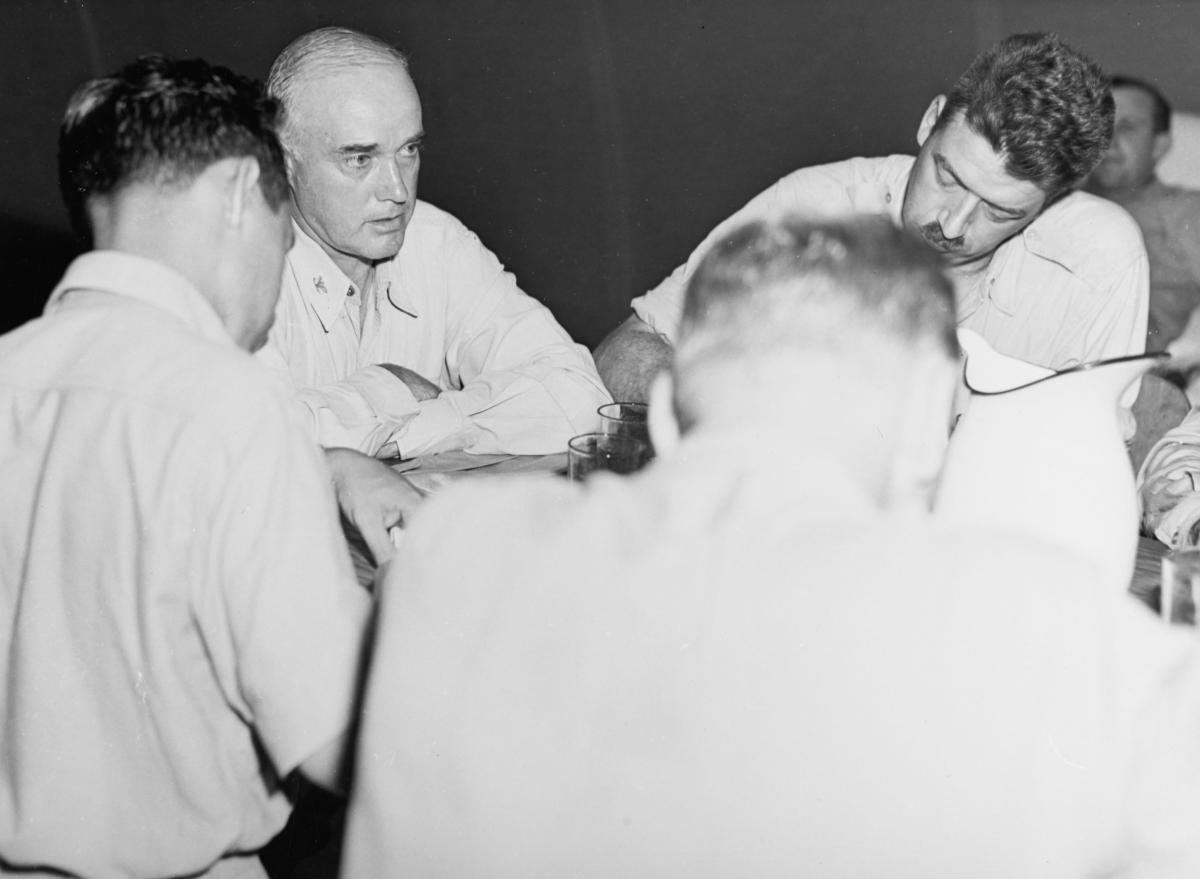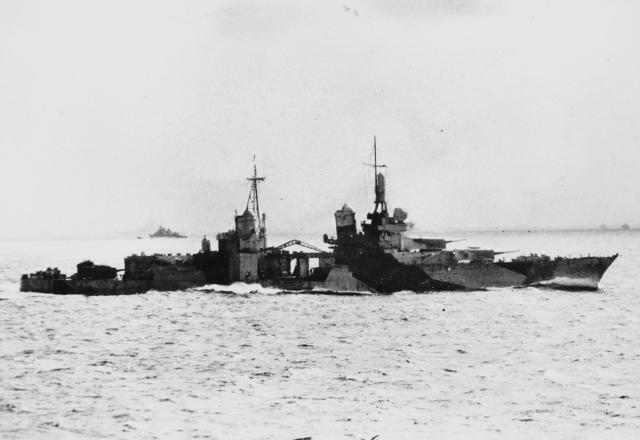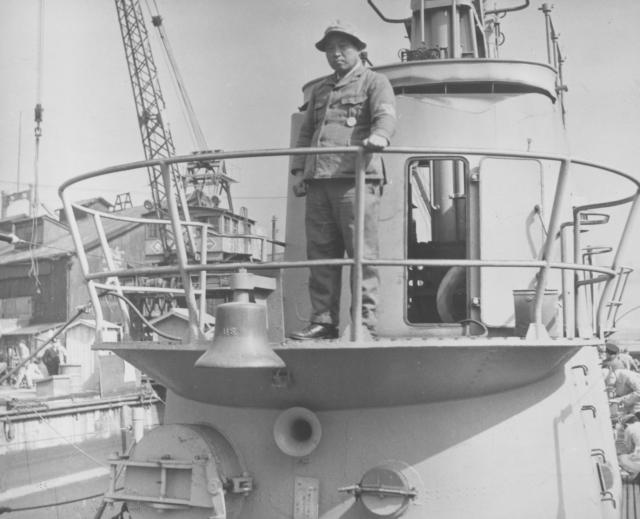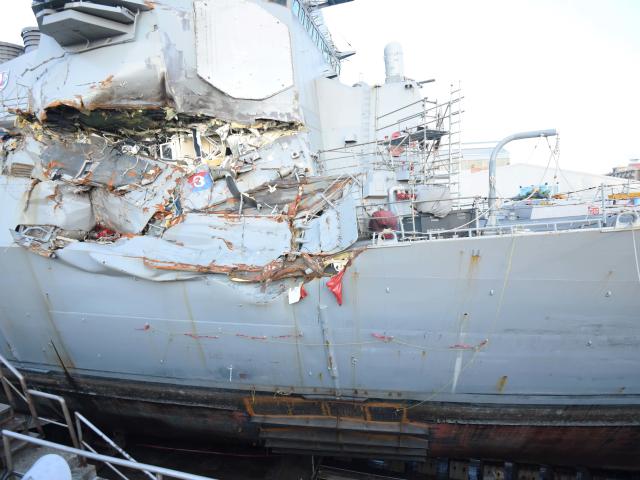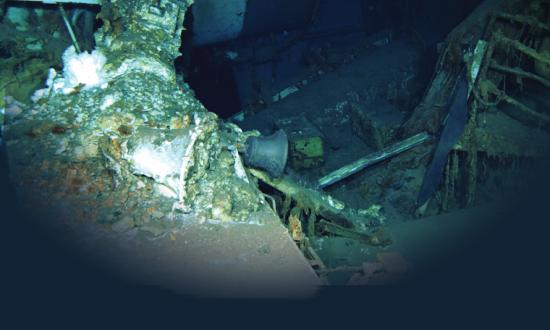The sinking of the USS Indianapolis (CA-35) shook the American consciousness, striking the families and the public as a senseless and shocking loss in the final months of the war in the Pacific. The captain of the Indy, Charles McVay, was later court-martialed for negligence. McVay was the only U.S. Navy commander convicted for losing his ship to enemy action during World War II. The Navy has a unique tradition: to hold accountable the highest levels of leadership for any event that causes harm to sailors or U.S. national security. While McVay’s conviction was legally correct, the standard of accountability applied to him was never applied with the same rigor to anyone else, and was not, therefore, a “standard.”
In the summer of 1945, the Indy had been tasked with delivering the components of the “Little Boy” atomic bomb to the island of Tinian. The Indy then proceeded to Guam, departing there for Leyte on 28 July, 1945. The operations officer reported to Captain McVay before departing Guam that the risk of submarine attack was “negligible,” and the Indy had neither destroyer escort nor antisubmarine warfare equipment. On the evening of 29 July, visibility was good and seas were calm, so the Indy stopped zigzagging at 2000, and there were no standing orders issued by McVay to zigzag to avoid submarine attack. During the 0000–0400 watch on the morning of 30 July, Japanese submarine I-58, commanded by Commander Hashimoto Mochitsura, fired six torpedoes at the Indy; two struck her forward starboard side at 0003 and 0004, respectively.
Damage control efforts proved ineffective, and the ship was quickly sinking. Captain McVay made every effort to send a distress call on the radio. McVay’s damage control assistant recommended abandoning ship just after the torpedoes hit the Indy, at about 0005; McVay refused. At 0012, the executive officer recommended abandoning ship, and McVay ordered abandon ship. The ship’s electrical systems were down, so the boatswain’s mate of the watch passed word verbally. McVay then proceeded to the radio room to get out a distress call, and was swept overboard as the Indy listed to 60 degrees and sank 12 minutes after the first torpedo struck. McVay remained at sea in a life raft with a group of nine sailors until 2 August. Of the original crew, 316 out of 1,195 survived; McVay estimates that about 500–800 men successfully abandoned ship, and about 200 were victims of shark attacks; the rest died from exposure and injuries.
A court of inquiry recommended a court-martial for McVay in September 1945, for his failure to zigzag and for taking too long to abandon ship. Commander Mochitsura of I-58 was given special permission to visit the United States to testify in the inquiry, and said that zigzagging would not have saved the Indianapolis. Admiral Chester Nimitz, then-commander of CINCPAC, recommended a letter of reprimand, calling his failure to zigzag, “an error in judgment.” Secretary of the Navy James Forrestal and Admiral Ernest King disagreed, and brought McVay to court-martial, where he was acquitted of failing to abandon ship quickly enough, but was convicted for his failure to zigzag. This court-martial occurred before the conclusion of the inspector general’s investigation, raising the question of motives for the court-martial. Nonetheless, there was little legal basis to appeal or overturn McVay’s conviction. Forrestal later remitted his sentence, a loss of 100 in lineal number, and McVay retired as a rear admiral, as was the custom at the time.
The majority of surviving sailors from the Indy regarded McVay as innocent of his conviction, saying he was “not guilty of anything except the fortune or misfortune of war.” McVay received hate mail every Christmas for the rest of his life, from the families of sailors who had died on board the Indy. On 6 November 1968, McVay put on his uniform, walked onto his front porch, and shot himself in the head, a toy sailor in his hand.
Admiral Nimitz later told Indianapolis survivors that McVey’s court-martial was a “mistake.” Commander Hashimoto, in a letter to Senator Warner in 1999, said, “Our peoples have forgiven each other for that terrible war, perhaps it is time your peoples forgave Captain McVay for the humiliation of his unjust conviction.” At the decommissioning of the USS Indianapolis (SSN-697) in February 1998, an Indy survivor asked Captain William Toti to help exonerate his former captain and, a few years later, Congress passed a resolution exonerating McVay, signed by President Bill Clinton in 2000. Secretary of the Navy Gordon England entered a letter in McVay’s service record on 11 July 2001, affirming his “lack of culpability for the tragic loss of the USS Indianapolis.”
McVay’s situation raises several questions about the value of accountability in the naval service. Accountability, especially applied to captains of ships, is nearly absolute; commanders are responsible for everything that happens within their command, even if the commander played no direct causal role. The purpose is to ensure commanders are aware that they are responsible for identifying and correcting problems before they arise. This orientation toward the value of accountability allows a closer analysis of McVay’s responsibility in the sinking of the Indianapolis. The principle of accountability holds that the leader is a part of the causal chain of events that causes the harm, which is usually true. McVay’s case is unique: it is a rare case in which the leader actually had no causal role in the harm whatsoever.
A crucial element of the court-martial was that McVay was not on trial for the sinking itself, but for failing to zigzag in good visibility conditions. The fault in this logic is clear: If the Indy had not sunk, McVay would not have been court-martialed. One might consider an alternate chain of events: That Indy had made it to Leyte unimpeded, but had failed to zigzag nonetheless. Suppose McVay realized his error and had reported it to his chain of command; no court-martial would have ensued. If zigzagging had been the standard which McVay fell short of, then the Navy would have court-martialed every captain who failed to zigzag, which it did not. Nonetheless, McVay’s conviction was legally accurate: He had failed to ensure he followed the order from the operational chain of command to zigzag. However, considering the Navy’s failure to apply the same standard to any other command, it becomes clear that the court-martial was in direct response to the sinking of the Indianapolis at the end of the war, and the public outcry that followed.
Legal questions aside, one must consider whether McVay can be held morally responsible for the sinking of the Indianapolis. The clear answer is no; McVay could not have done anything to prevent the sinking of the ship. He undertook no action, nor omitted any action that could have prevented I-58 from sinking the Indianapolis. This conclusion finally raises the question of whether the court-martial properly held him accountable. The Navy has a duty to retain the trust of the American people by holding commanders accountable for their actions, omissions, and misperceptions. The Navy also has a duty to the sailors and commanders traumatized by the aftermath of such a conclusion. In this case, the vast majority of Indy sailors believed McVay innocent of any wrongdoing in the ship’s sinking. This is not to say that the Navy should be ruled by opinion within its own ranks; rather, this is to say that the Navy should always seek to link causes and effects when holding commanders accountable, rather than punish leaders for effects of which they played no causal role.
(U.S. Navy/Leonard Adams)
In the more modern cases of the USS John S. McCain (DDG-56), Fitzgerald (DDG-62), or the Farsi Island incident, the commanders in each situation failed to ensure watches were stood properly, that watch standers were properly qualified, and that weapons were loaded. Though in each of these cases the commanders were not directly responsible, their failure to prepare the crew, ensure the safety of the ship, and to properly respond to operational demands made them accountable for those incidents. McVay’s case stands in contrast to these: He did everything necessary for the Indy to go to sea, he responded properly to crises, and continued to lead in the aftermath.1 Accountability should be a standard, applied at all times in the same manner. McVay did not receive the standard of accountability demonstrated throughout World War II. Despite the injustice and selectivity of the findings against McVay, he accepted responsibility for the events that occurred, accepting his conviction as “part of the responsibility of command.”2 This display of professionalism and service to both the country and the institution of the Navy was admirable, further distinguishing a man who had become a “scapegoat” for the losses of a nation.
McVay’s court-martial applied a nonstandard interpretation of accountability, failed to link causes and effects, and simply proliferated survivors’ guilt and moral injury in Indianapolis survivors. Accountability is a critical standard for the Navy; it ensures public trust and reminds commanders that they are responsible for readiness, safety, and sailors’ wellbeing; however, accountability must be applied non-selectively, as a standard that links causes and effects. To do otherwise communicates a lack of trust in commanders and opens trauma survivors to further moral injury.
It is difficult to say that no one was responsible for the sinking of the Indy; indeed, probably even harder for the families of those lost in her sinking. Nonetheless, the Navy must maintain a nonselective standard and link causes and effects. This standard can and should be properly applied today; to hold commanders accountable for effects they cause, rather than to respond to public outcry in the wake of crisis and challenge.
1. Mary Kelly, “Charles B. McVay III: Accountability,” in Leadership Embodied, ed. Joseph Thomas (Annapolis, MD: U.S. Naval Institute Press, 2013), 113.
2. Kelly, “Charles B. McVay III: Accountability,” 115.



